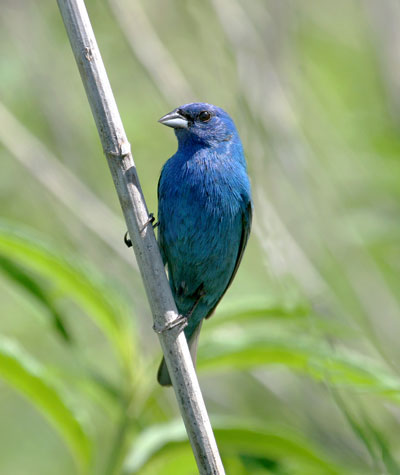|
back Home Life Along a
|
|
Indigo Bunting
Passerina cyanea|
© Steve Metz, www.pbase.com/stevemetz |
Indigo buntings are small migratory songbirds (12 cm from head to tail) that prefer to live on the edge of forests, in brushy thickets, and within old fields during their summer breeding season. The vegetation around prairie rivers is great habitat for nesting buntings. Adult males are brilliant blue while females and juveniles are brown with light streaks on the breast. As a migratory bird, the indigo bunting arrives in Oklahoma in mid-April and nests May through July. They usually raise two broods during that time. In a cup-like nest of leaves, grasses, stems, and bark, the bunting lays 3-4 bluish white eggs. The female is the primary care giver and will protect and feed the chicks for about 3 weeks after the eggs hatch. Their bright blue coloring and cheerful song make them easy to find in the breeding season, but the males’ plumage changes to brown and their vocalizations are fewer during the winter. Being a long-distant migrant, the indigo bunting travels about 2000 km from its breeding ground to its wintering ground. It breeds throughout the eastern US and parts of Arizona and New Mexico and winters primarily in southern Florida, Mexico and Central America, and on islands in the Gulf of Mexico. Indigo buntings can be observed across Oklahoma, but are rare in the extreme western edge and panhandle where trees, their preferred nesting locations, are scarce. |
|
back to species list |
PDF of all species profiles
|

